Đồ Chua—the quick Vietnamese pickled carrot & daikon that’s sweet, sour, salty, and crunchy. Easy to prep, lasts for weeks, and makes every bite sing, thanks to tips from Vietnamese aunties.
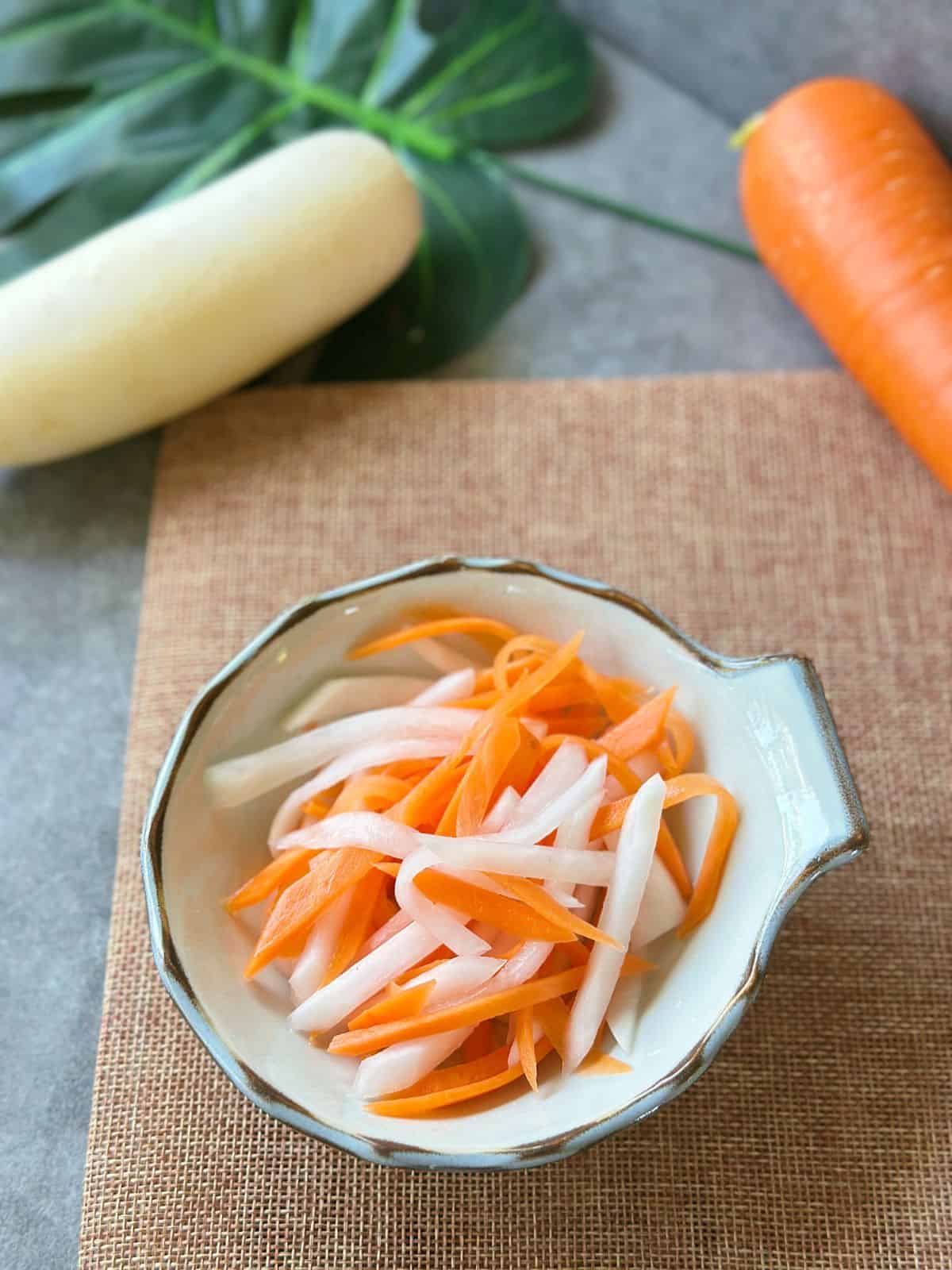
What is Đồ Chua?
In Vietnamese, it literally means “sour stuff”—and that’s pretty much the vibe! It’s a quick pickle: veggies soaking in a sweet-tangy brine, giving you that crunch and zing—no weeks of fermenting required.
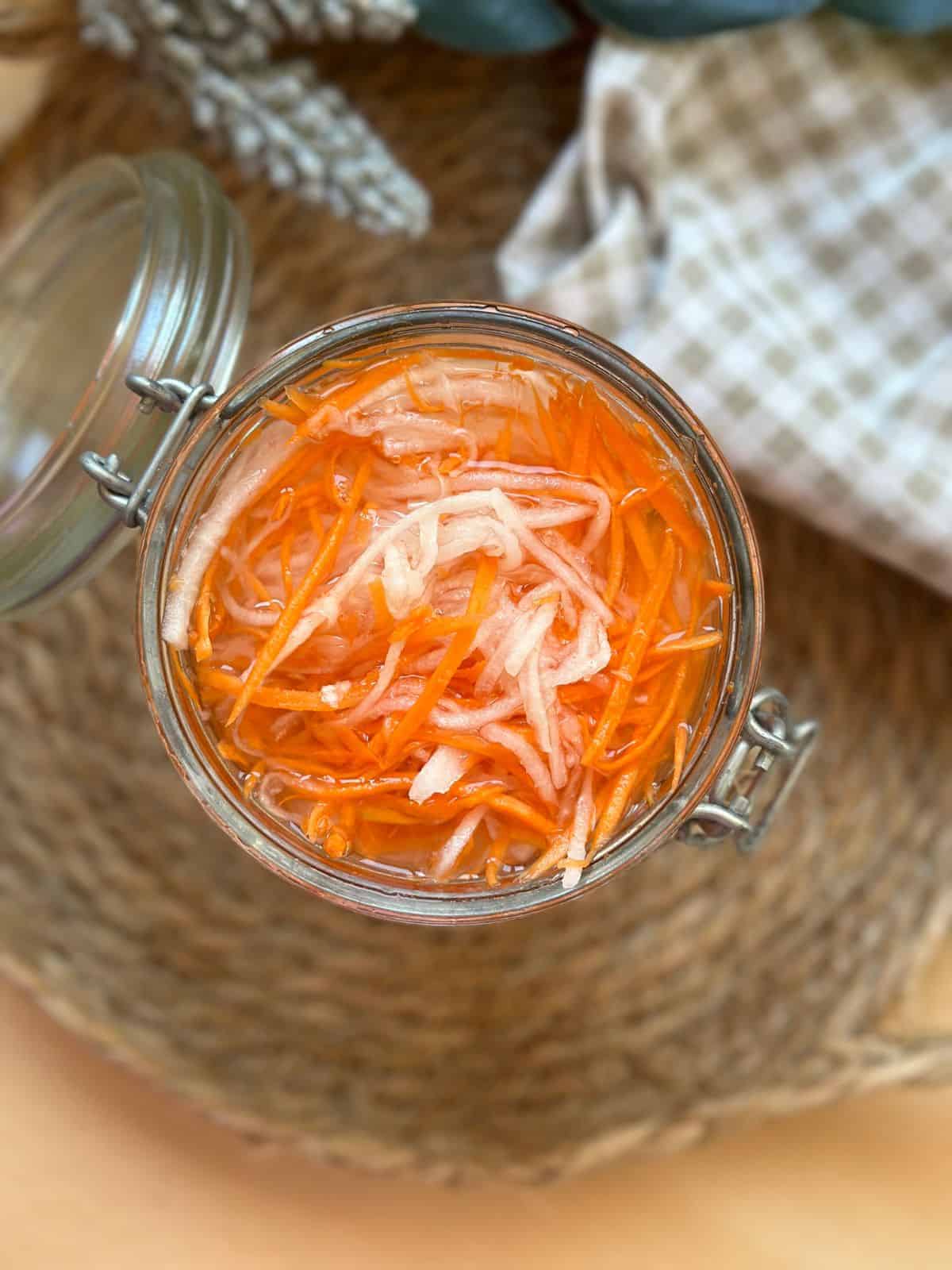
Đồ Chua Pickles are a big deal in Vietnamese food, especially in the South. They add a refreshing pop to any dish, like kimchi does in Korean cuisine.
Up North, you’ll find Dưa Góp—carrot and green papaya (or kohlrabi if papaya’s out of season)—served with Hanoi classics like Bún Chả.
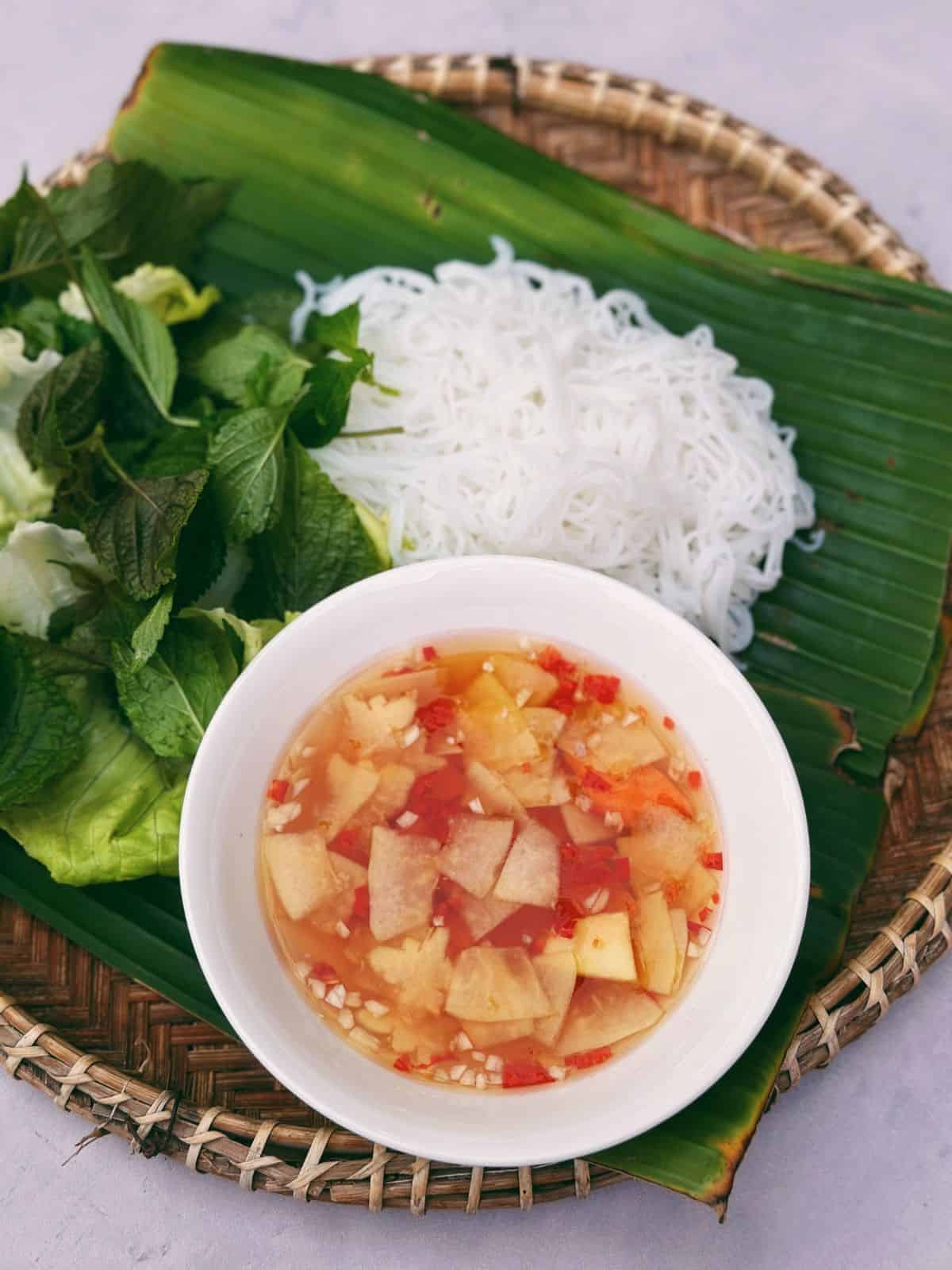
Vietnamese Pickled & Fermented Veggies
Dưa Giá: Pickled bean sprouts with garlic chives
Dưa Món: Mixed veggies pickled in a fish sauce brine
Dưa Chua: Pickled mustard greens — a family favorite!
Giấm Tỏi: Signature pickled garlic from Northern Phở
Ingredients
Veggies: Carrots and daikon are the ultimate duo. No daikon? Kohlrabi’s got your back—it’s basically daikon’s cooler cousin.
I go with 3 parts daikon to 2 parts carrot for the perfect balance—sweet, tangy, crunchy. But if you love extra carrot, go wild!
Brine: Just rice vinegar (5%), sugar, and salt.
I’ll show you two ways: a quick version with less brine for fast, small batches, and a long-lasting version with extra brine to keep pickles crunchy for weeks.
Instructions
The cut matters! For Bánh Mì, go chunkier so the pickles stay crunchy against soft bread. For rice noodle salads, thin strips are best—they mingle with the noodles like they belong.
Step 1: Prep the veggies
- Peel carrots and daikon.
- Crunchy style: Cut into matchsticks (carrots slightly thinner than daikon). Toss with 1 tsp salt and rest 15 min. Rinse 2–3× to remove excess salt, then gently squeeze out water — the sticks should now be pleasantly bendable.
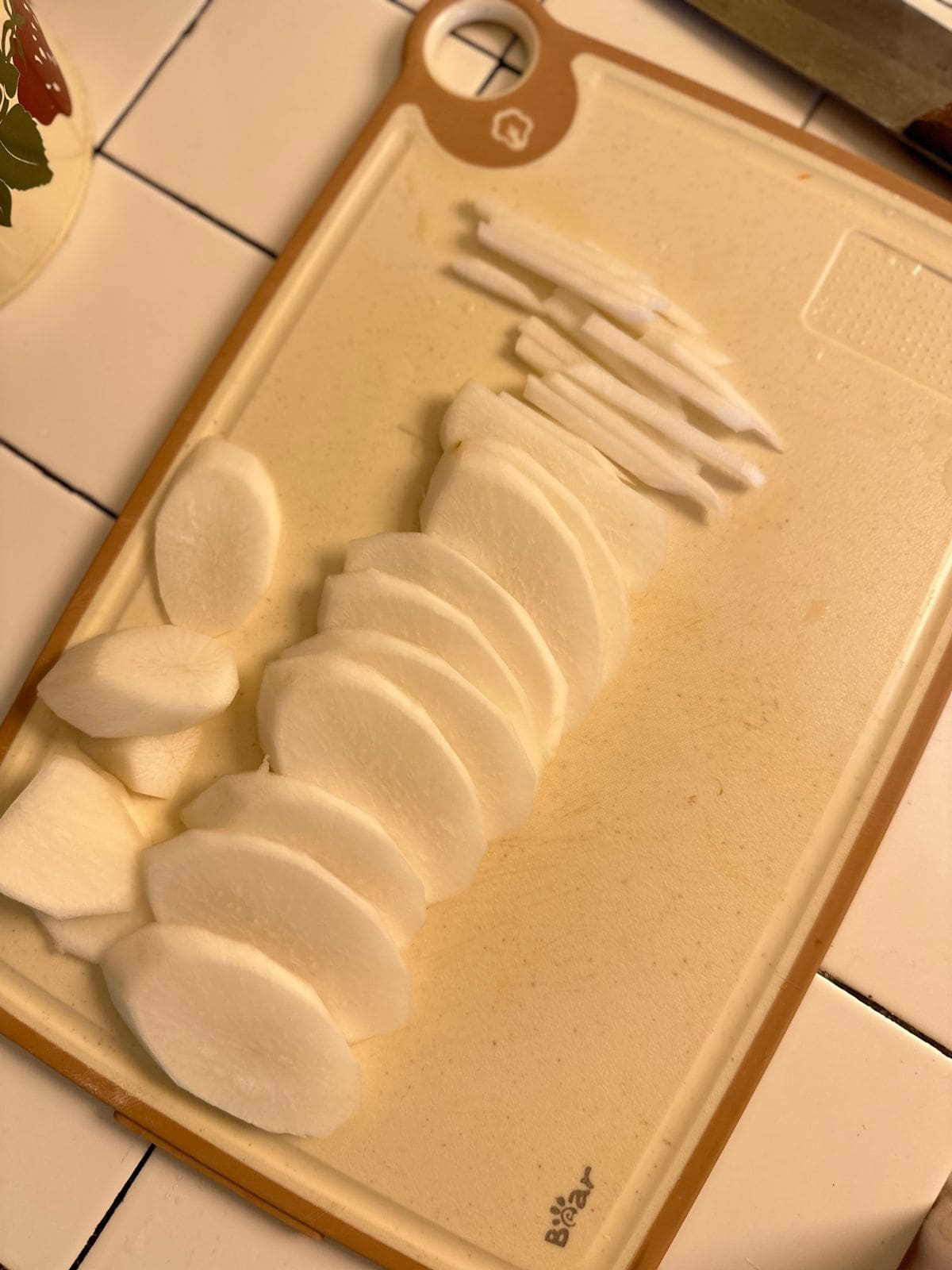
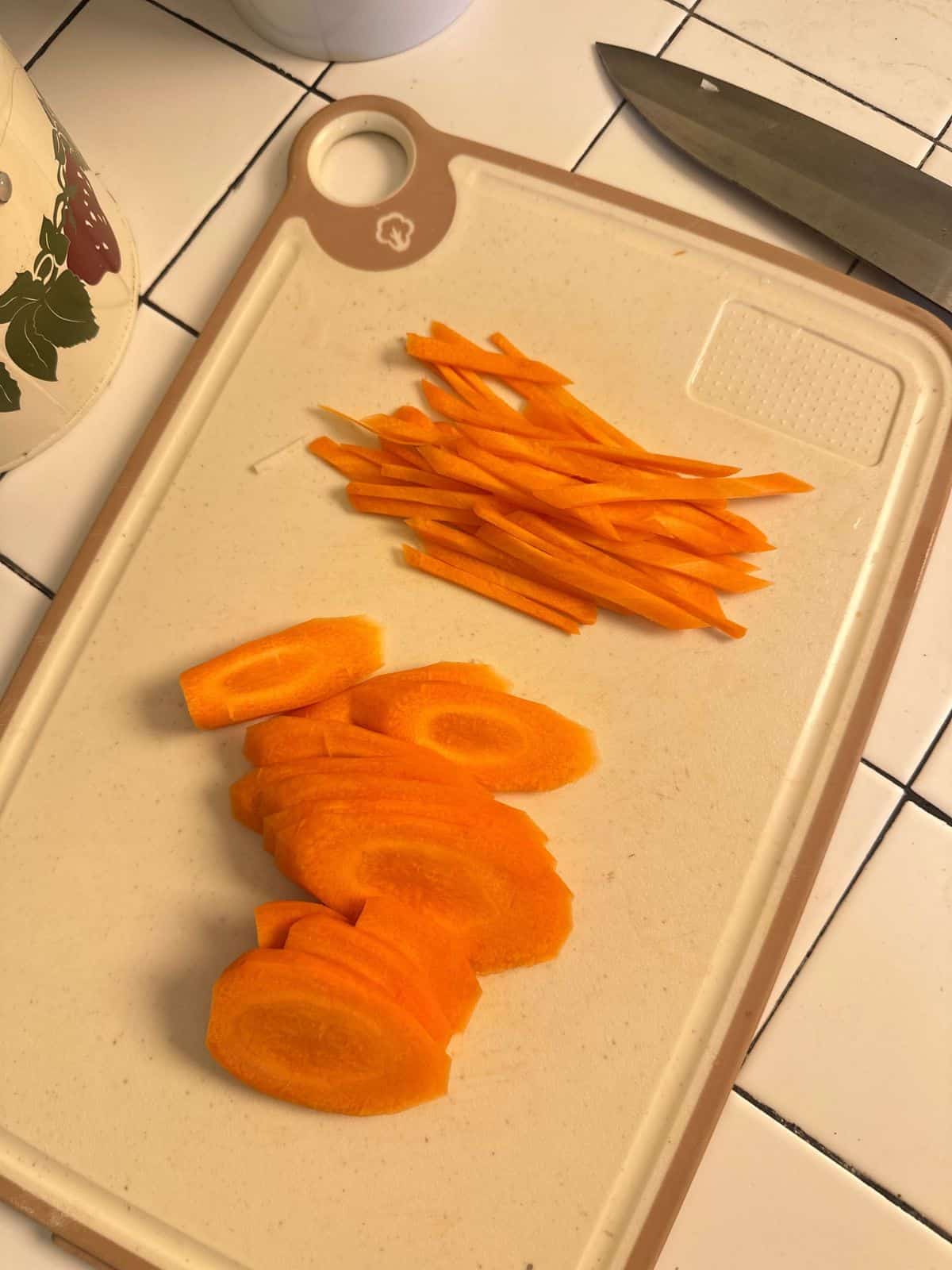
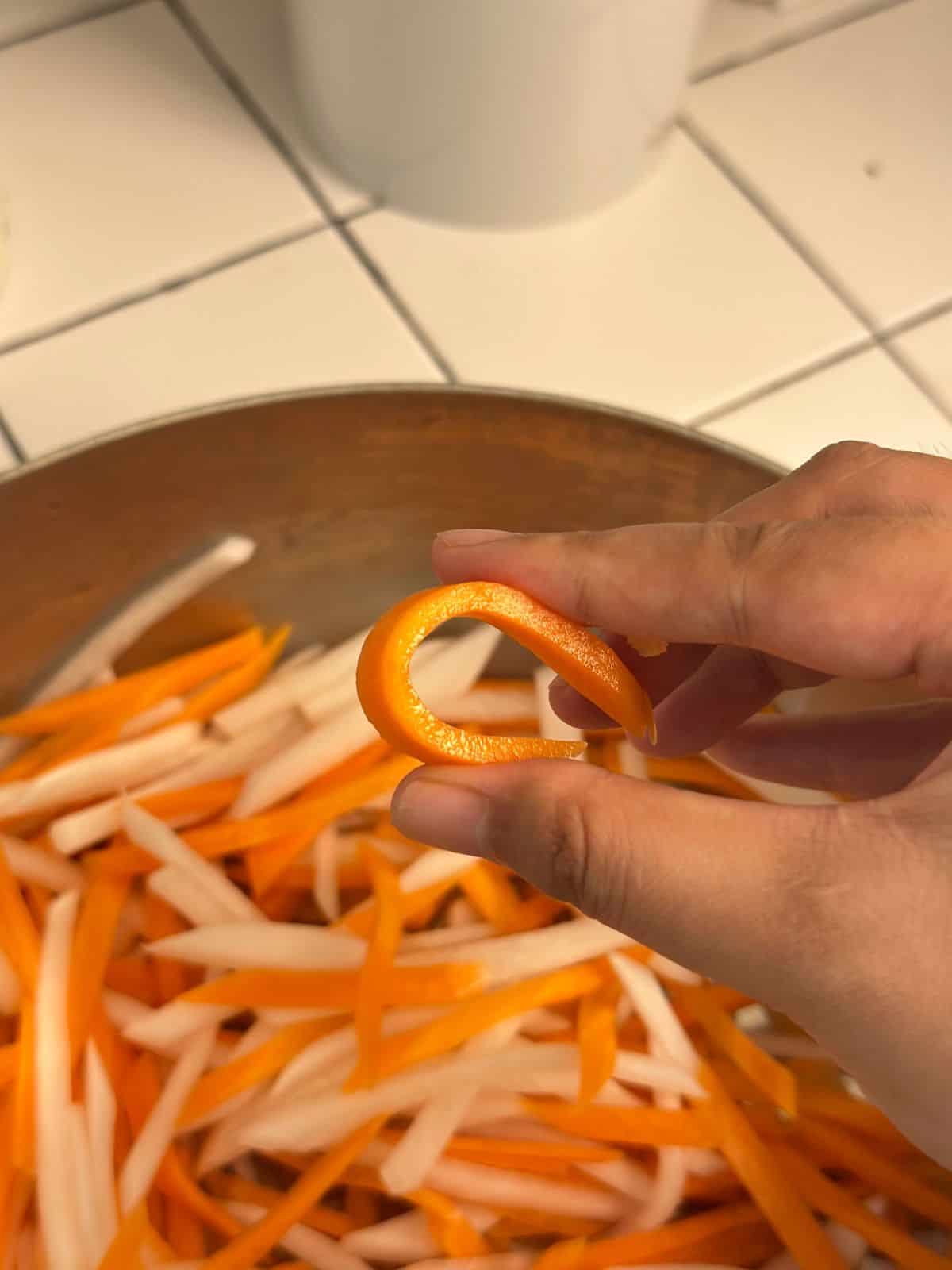
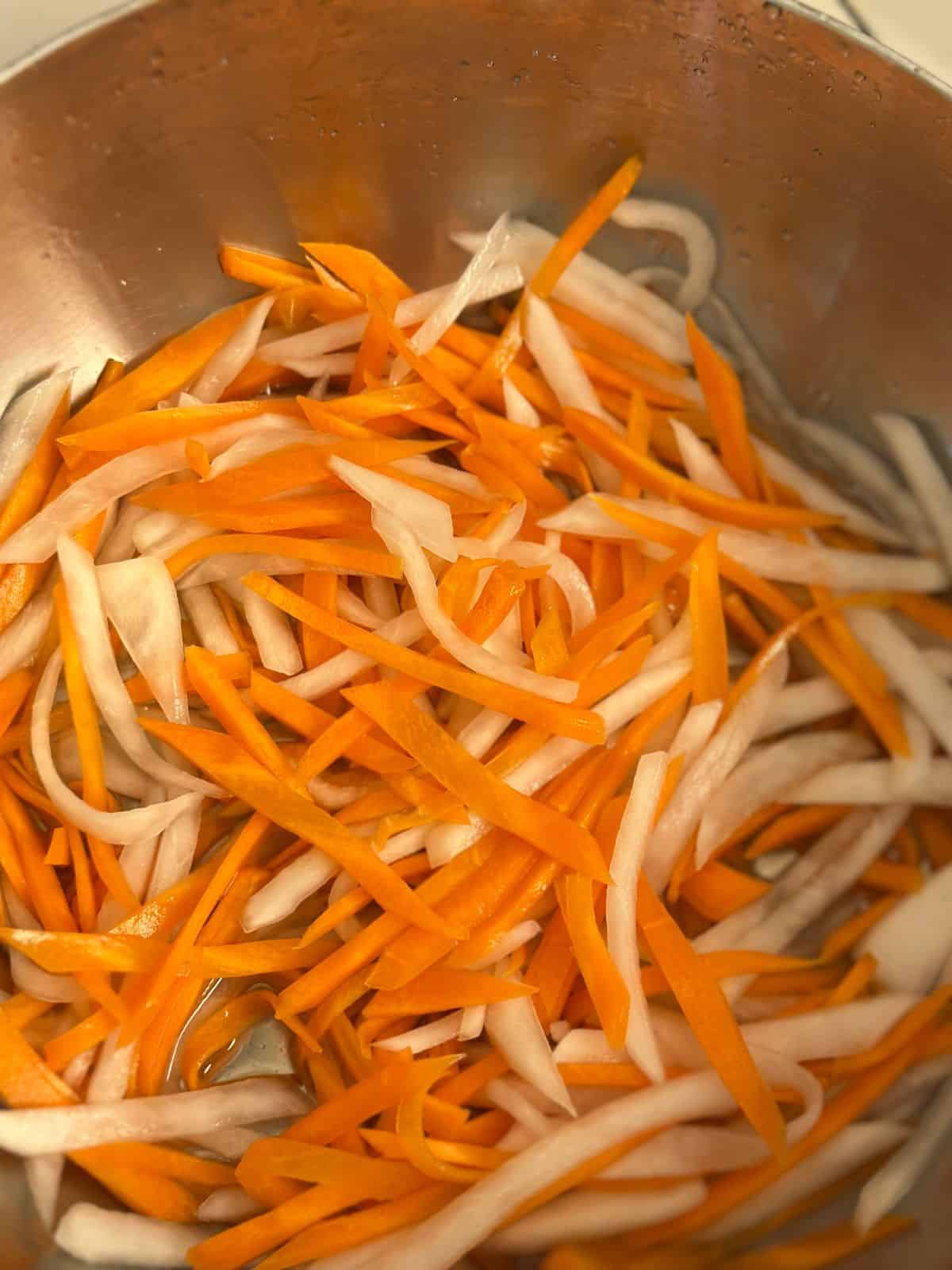
- Thin style: Julienne with a mandolin slicer.
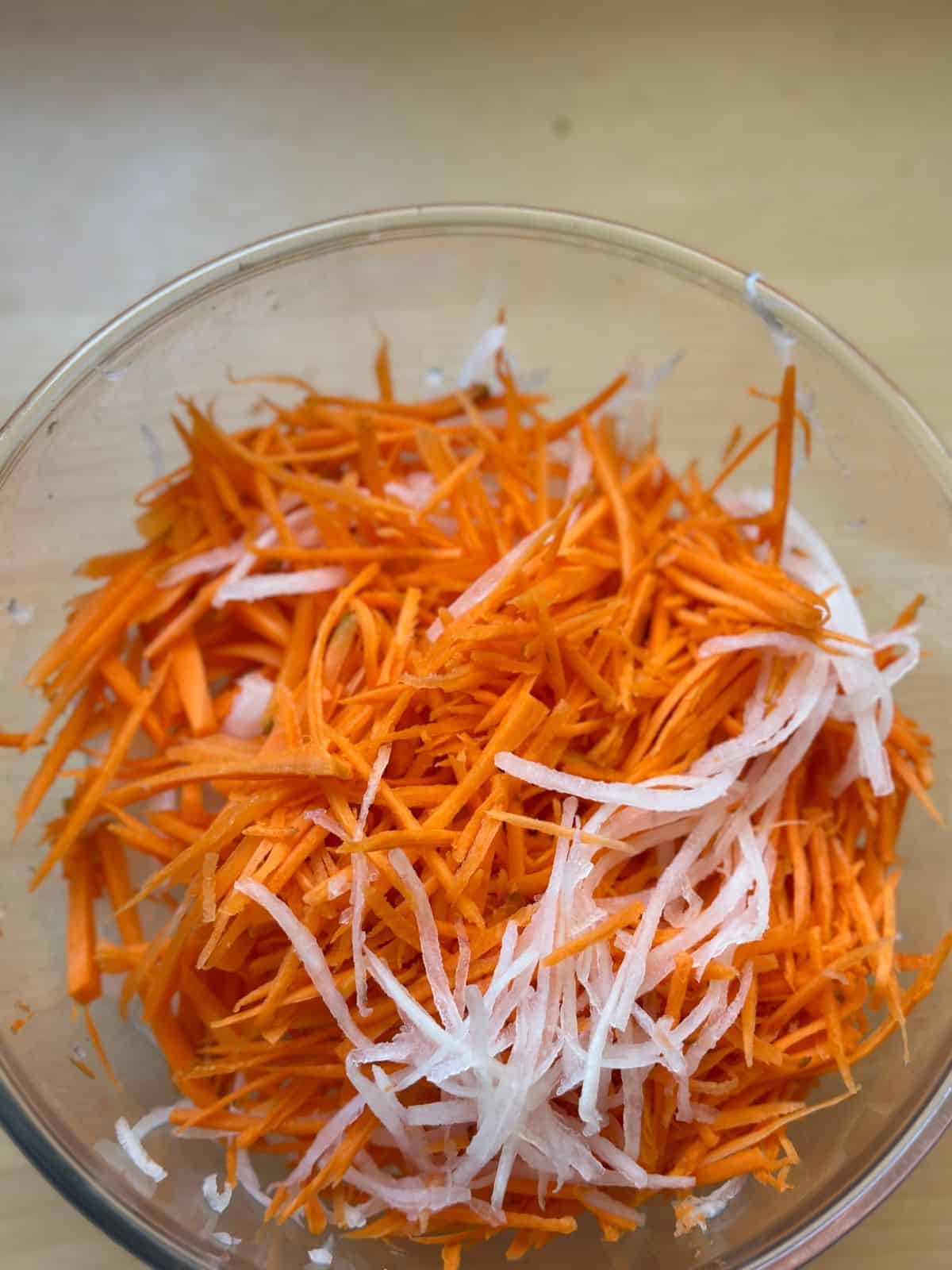
Step 2: Pickle
- Quick style: Toss veggies (from 1 daikon and 1 carrot) with 2 tsp salt, 4 tbsp rice vinegar, and 2 tbsp sugar. Let sit 30 minutes, and they’re ready to enjoy!
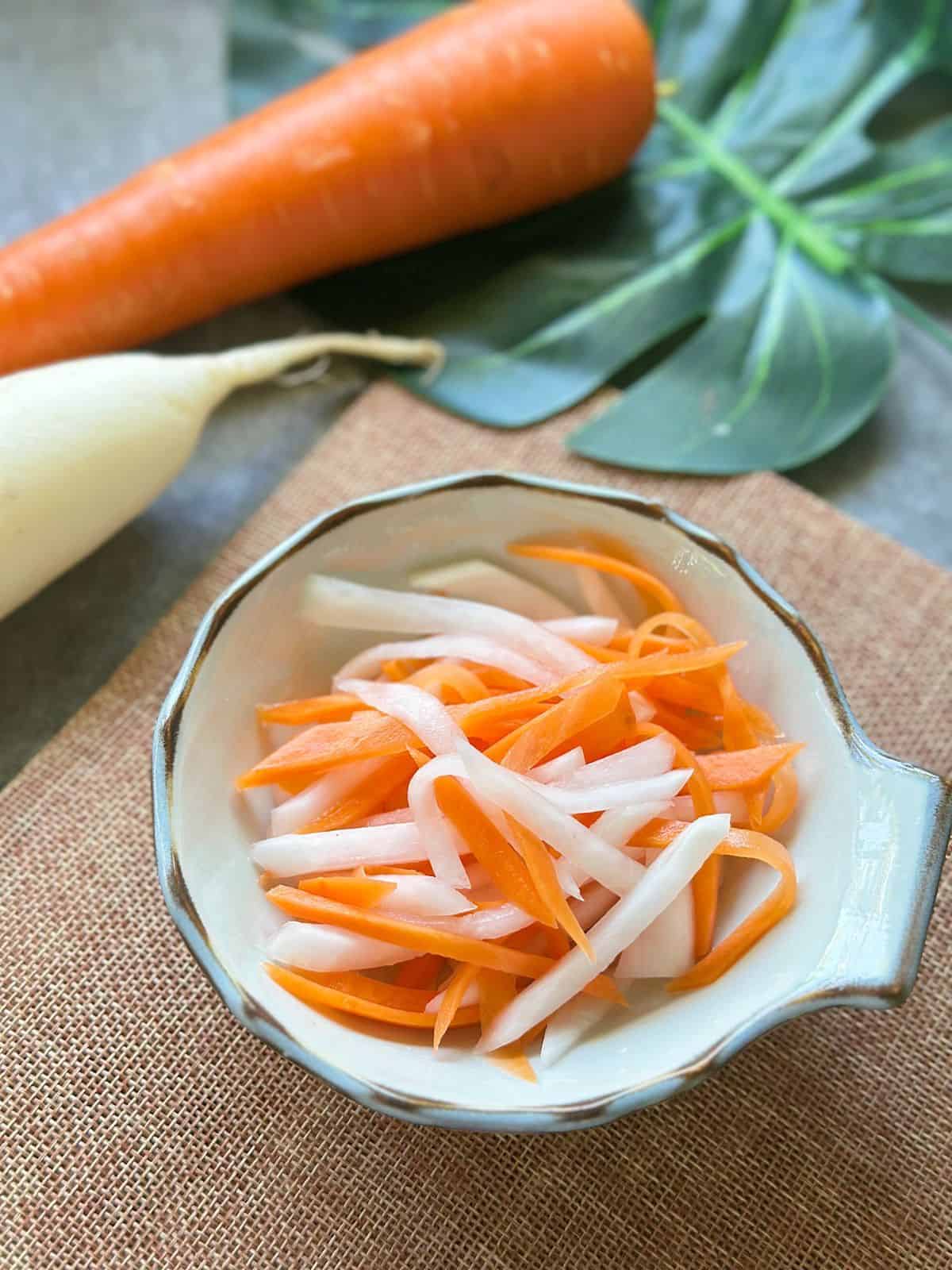
- Longer style: Make a brine: equal parts rice vinegar (5%), sugar, and water—enough to submerge the veggies. Pack veggies in a jar, pour brine over, refrigerate 8 hrs, and they’re ready!

What to Serve with Đồ Chua
Vietnamese food is all about balance. Got something rich, fried, or heavy? Enter Đồ Chua—crisp, tangy pickles that cut through the richness, usually alongside fresh Vietnamese herbs and lettuce.
Dipping Sauces
- Nước Chấm – The all-purpose Vietnamese sauce that goes with everything.
- Peanut Sauce – Perfect for spring rolls, especially Bò Bía, the Chinese sausage kind.
Rice Noodle Salads
- Bún Bò Xào – Loaded with savory stir-fried beef
- Bún Gà Nướng – Topped with juicy lemongrass chicken
- Bún Thịt Nướng – Finished with flavorful Vietnamese grilled pork
- Bún Chả Giò – Crowned with crispy Vietnamese egg rolls
Fried or Crispy Dishes
- Bánh Bột Chiên – Fried rice cakes with egg
- Bánh Xèo – Crispy, savory pancakes
- Bánh Khọt – Mini crispy pancakes
- Bánh Tôm – Sweet potato & shrimp fritters
Other Dishes
- Cơm Tấm – The ultimate broken rice platter with tender lemongrass pork chops and tangy đồ chua pickles.
- Bánh Mì – Classic Vietnamese sandwich, packed with flavorful fillings like Pate Gan (liver pâté), Thịt Nướng (grilled pork) and Chả Lụa (Vietnamese ham).
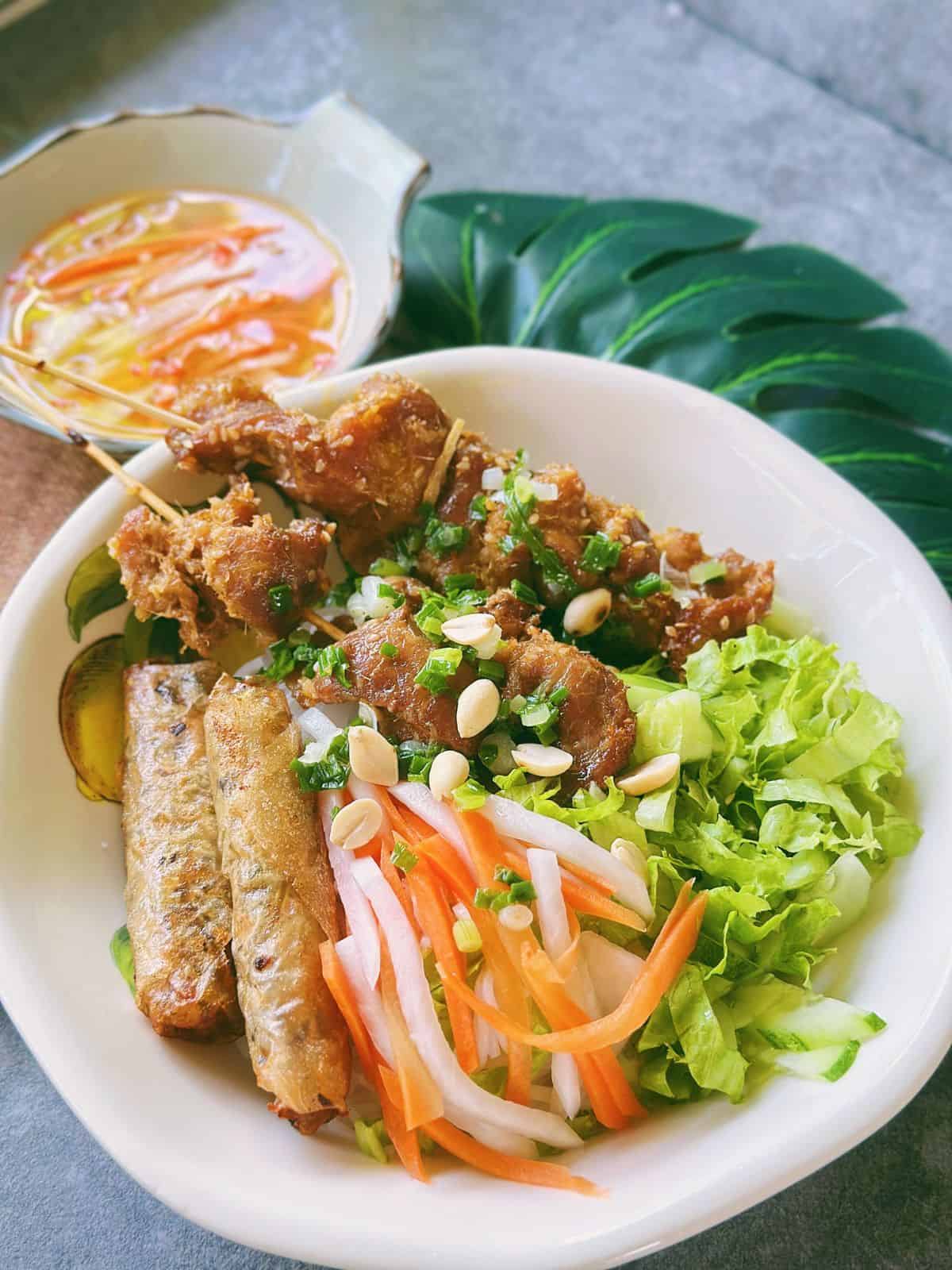
Substitutes & Tips
No daikon? Kohlrabi or green papaya make great swaps. I usually go with kohlrabi—it’s easier on the wallet here in Germany.
Other veggies: Cucumber, cauliflower, broccoli (buds & stems), or even morning glory (rau muống) all work beautifully in this brine.
Vinegar options: Rice vinegar is classic, but apple cider or distilled vinegar work too.
Use lukewarm water in the brine to help the veggies absorb flavors faster.
Sterilize jars if making a big batch—you’ll keep your pickles fresh longer.
Keep it chilled—Đồ Chua left out will turn overly sour.
Mandolin alert! Those blades are sharp. Wear a cut-resistant glove unless you want a firsthand lesson in ouch.
More tasty Vietnamese veggie dishes

(Vietnamese Sweet & Sour Soup)
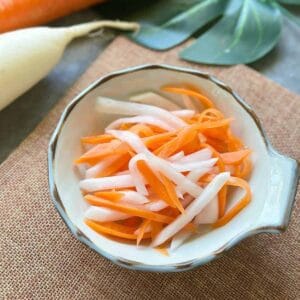
Vietnamese Pickled Carrots & Daikon (Radish): Đồ Chua
Equipment
- Mandolin slicer
- Vegetable shredder
Ingredients
Vegetables:
- 1 daikon (≈300 g / 0.66 lb)
- 1 lbs carrot (≈320 g / 0.70 lb)
Quick Pickle:
- 2 tsp salt
- 4 tbsp rice vinegar (5%)
- 2 tbsp sugar
Longer Pickle (syrup method):
- 1.5 cup water (375ml)
- 1.5 cup sugar (375ml)
- 1.5 cup rice vinegar (5%) (375ml)
Instructions
Prep the Veggies
- Peel carrots and daikon.
- Crunchy style: Cut into matchsticks (carrots slightly thinner than daikon). Toss with 1 tsp salt, rest 15 min, rinse 2–3×, and gently squeeze — sticks should be nicely bendable.
- Thin style: Julienne using a mandolin slicer.
Pickle
- Quick style: Toss veggies with salt, rice vinegar, and sugar. Let sit 30 min — ready to enjoy!
- Longer style: Make the brine. Pack veggies into a jar, pour brine over, refrigerate 8 hrs — ready to enjoy!
Notes
- No daikon? Swap with kohlrabi or green papaya.
- This brine works beautifully with other veggies too: cucumber, cauliflower, broccoli (buds and stems), or morning glory/water spinach (rau muống).
- For the brine, rice vinegar, apple cider vinegar, or distilled vinegar all work well.
- To store Đồ Chua long-term, sterilize your containers.
- Avoid leaving pickles at room temperature — they’ll turn too sour.
- When using a mandolin or shredder, wear a cut-resistant glove to stay safe.

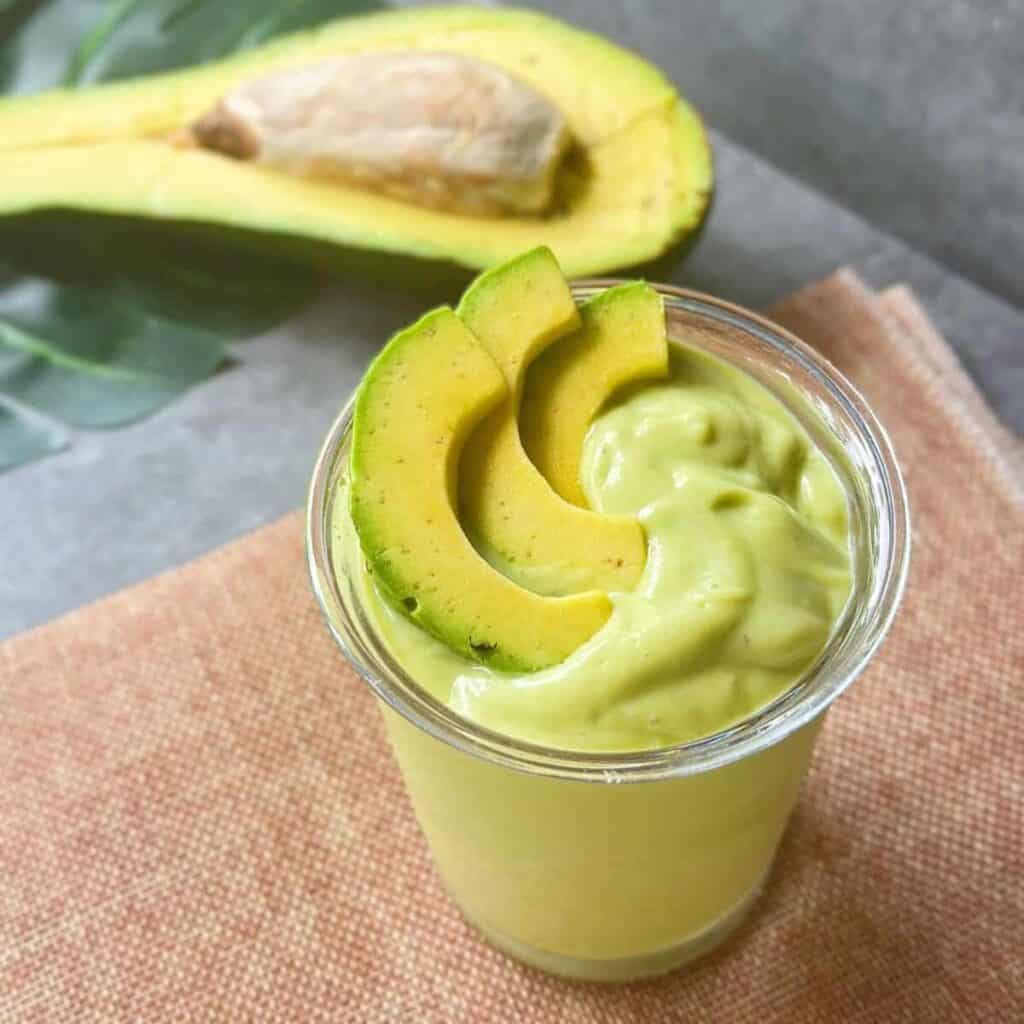


I made this for Banh Mi. It came out so nice. I used only 1/3 of sugar as we are on low carb/starch diet. Thank you for sharing your recipe. Leftover brine I used to pickle leftover cucumber & onions. Also nice. Planning to use the pickles as salad toppings.
Thank you for your feedback. I recommend that you could try my grilled lemongrass pork chops with rice. Add some Vietnamese scallion oil, and then serve them with nước chấm dipping fish sauce and đồ chua (all recipes you can find on my blog). In Vietnam, we call it “cơm sườn nướng”—you won’t be disappointed!!